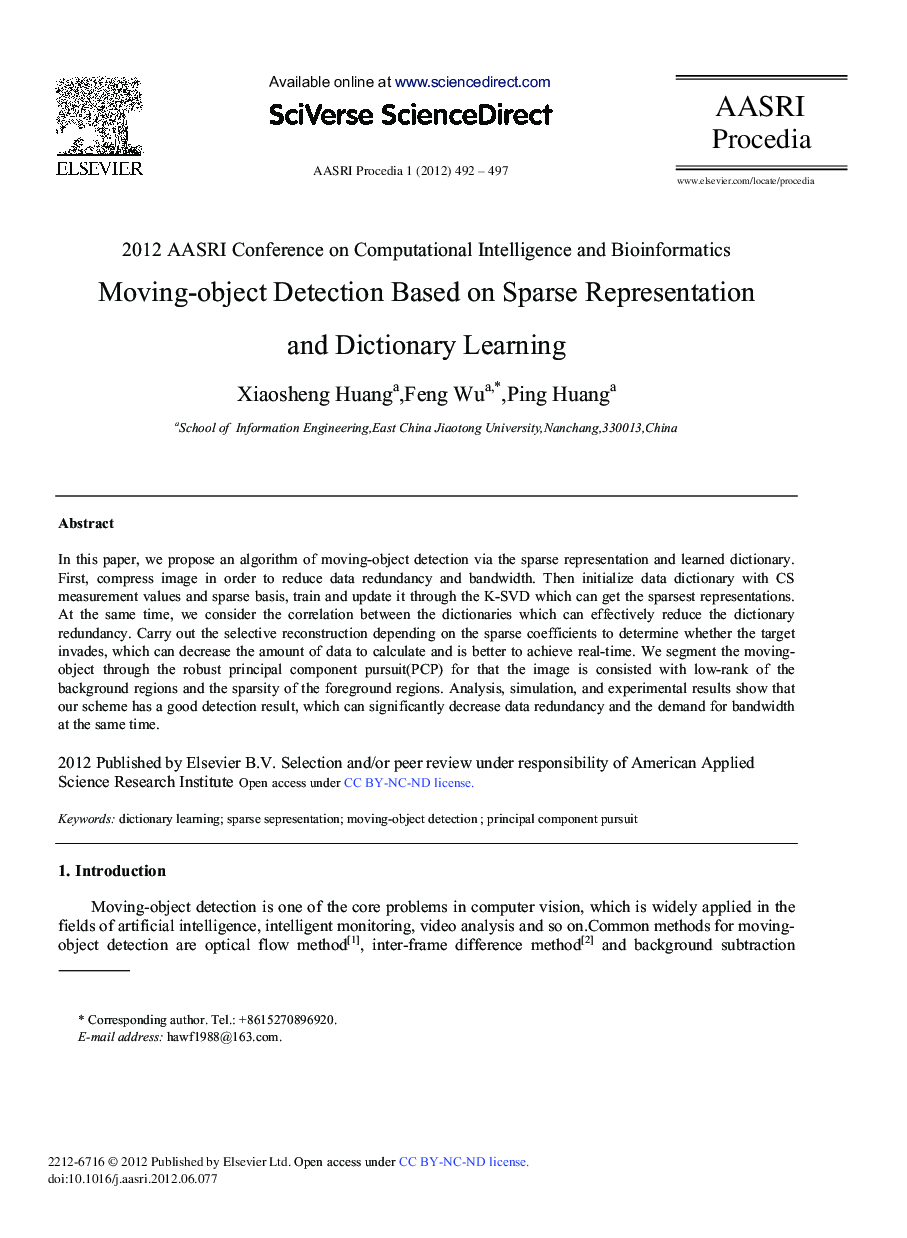| کد مقاله | کد نشریه | سال انتشار | مقاله انگلیسی | نسخه تمام متن |
|---|---|---|---|---|
| 569549 | 1452086 | 2012 | 6 صفحه PDF | دانلود رایگان |

In this paper, we propose an algorithm of moving-object detection via the sparse representation and learned dictionary. First, compress image in order to reduce data redundancy and bandwidth. Then initialize data dictionary with CS measurement values and sparse basis, train and update it through the K-SVD which can get the sparsest representations. At the same time, we consider the correlation between the dictionaries which can effectively reduce the dictionary redundancy. Carry out the selective reconstruction depending on the sparse coefficients to determine whether the target invades, which can decrease the amount of data to calculate and is better to achieve real-time. We segment the moving–object through the robust principal component pursuit(PCP) for that the image is consisted with low-rank of the background regions and the sparsity of the foreground regions. Analysis, simulation, and experimental results show that our scheme has a good detection result, which can significantly decrease data redundancy and the demand for bandwidth at the same time.
Journal: AASRI Procedia - Volume 1, 2012, Pages 492-497